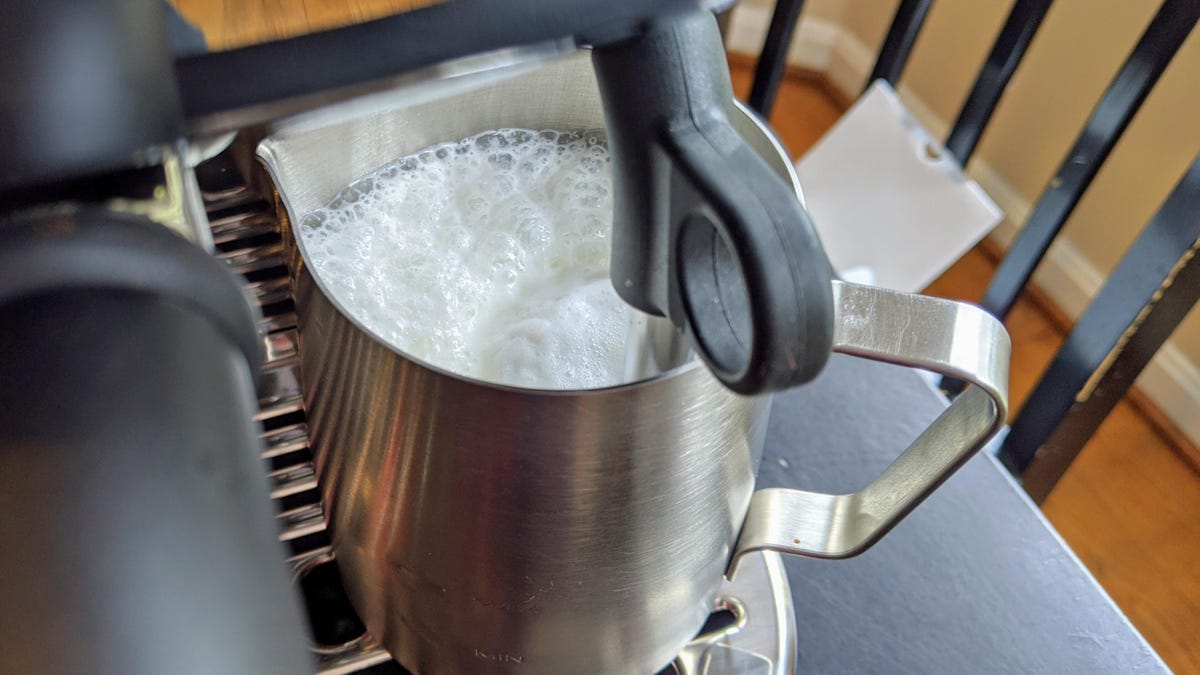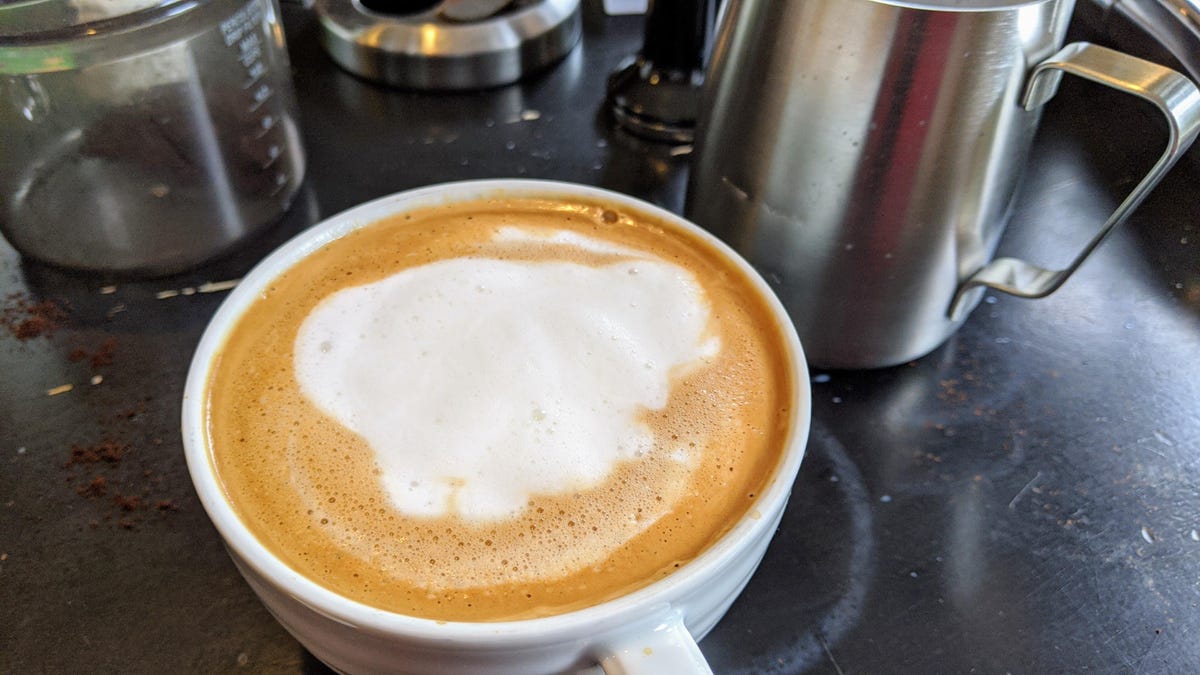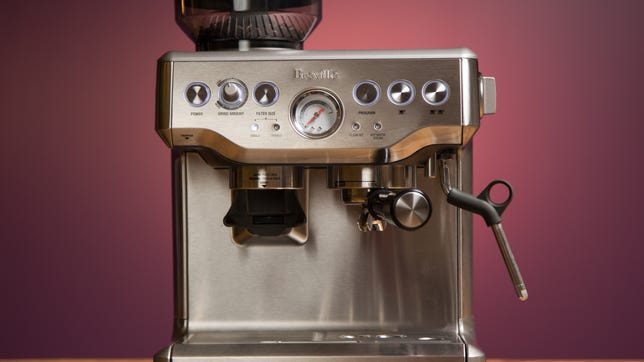[ad_1]
Gone are days when you needed to go to an overpriced coffee shop to enjoy delectable, authentic espressos, lattes and other specialty espresso-based drinks. Espresso machines are more popular than ever as kitchen appliances and you can find commercial espresso machines for all tastes and budgets.
Finding the best espresso machine for you can be challenging, though. Espresso is one of those drinks that can go oh-so-right or oh-so-wrong. If you don’t do your homework, you could end up with an awful espresso maker that serves up terrible drinks. Complicating matters, some coffee makers billed as domestic espresso machines aren’t really espresso machines at all.
Ultimately, the best espresso machine for you will be the one that best meets your needs without exceeding your coffee budget. Don’t worry — I’m here to guide you through the leading choices for the best espresso machine. A home espresso machine needs to have an advanced brewing process and handy bells and whistles. For example, look for features like a double portafilter basket for double-shot drinks or a milk frother and steam wand for a cappuccino or latte.
A good automatic espresso machine doesn’t come cheap and you can expect to pay at least $500 for something that whips up a legit cafe-caliber espresso drink (or just an espresso shot, if that’s your thing). When in doubt, try to remember how much you’ll be saving on all the cappuccinos, lattes and double shots from the specialty coffee shop.
A good espresso coffee is uniquely powerful and flavorful. It’s the ultimate test for home brewers.
Lynn La/CNET
You can also drop as little as $100 if you’re willing to settle for a mediocre espresso, but I urge you not to pounce on an espresso maker that costs less — especially if you plan on drinking espresso regularly. Seemingly affordable espresso machines may look like a bargain at first blush, but they’re often a waste of money and counter space.
For the coffee lover on a budget, “espresso brewers” (in the $30 to $50 price range) typically lack motorized pumps and are powered by steam pressure alone. What they produce is really moka pot coffee, the sort of drink made by simple stovetop brewers; it won’t taste quite like the espresso you’re used to from the barista at your local coffee shop or cafe. That’s not inherently bad; it’s just not espresso.
To find the best commercial espresso machine for espresso lovers, I spent over 80 hours putting 10 available espresso machines through their paces. I limited my testing to manual espresso machine picks, not the ones that make espresso from a coffee pod or capsule. (After all, is espresso from an espresso pod really espresso?) I also revisited three other machines I reviewed previously. During the process, I made and sampled scores of espresso shots, double shots, lattes, cappuccinos and pitchers of steamed milk and milk froth. Basically, if it was a coffee drink, I made it. I also took into account things like water reservoir and storage, water filter, control panel, grinding capabilities and automatic milk frother length (and its milk steamer and milk frother abilities).
Based on my experience, these are the three I’d pick as the best home espresso machines. While they all get the job done and offer the essential features you need — like a steam milk frother, drip tray, substantial water reservoir and easy-to-clean stainless-steel base — the key differentiating factor between them is the price. And how much you spend on an espresso machine does have a major impact on what type of coffee you’ll ultimately get.
I limited this best espresso machine list to automatic and semi automatic espresso machines. I excluded any super automatic espresso machine options, as sold by Krups, Philips, Miele and others. Those models are a breed apart, costing many times more ($2,000 to $3,000). Also, if you’re not sure you’re ready to throw down cash for an espresso machine, but still want to brew excellent cups of coffee at home, we can help you narrow down which is the best coffee maker for regular coffee. We can also recommend products for making excellent iced coffee and even cold brew.
I update this best espresso machine list periodically and you’ll find my testing methodology below. Still with me? Keep going — delicious espresso will soon be yours!
Chris Monroe/CNET
You can’t beat the Breville Barista Express and its combination of performance, features and price. The machine’s formidable grinder pulverizes espresso beans and smart technology doses grounds directly into its portafilter basket, plus its sturdy frother steams milk well and makes thick foam. It also consistently pulled the best-tasting coffee bean shots of espresso in my test group. So while it’s not exactly a cheap espresso machine, you’re getting a lot for the price.
The control panel may be a little intimidating at first, but once you get the hang of things, a delicious shot (or double shot) of espresso, latte or other freshly ground coffee drink of choice will be your reward. Made from stainless steel, the Barista Express is a cinch to clean as well. And to seal the deal, Breville includes premium metal tools such as a handy dose trimmer and tamper.
I will note, though, that this machine is not small. If counter space is at a premium in your kitchen, you may want to look at the next machine on the list instead.
Brian Bennett/CNET
For a novice barista who craves great espresso at home but is nervous about getting the coffee ground and espresso-making technique down, the Breville Bambino Plus is the perfect choice. It’s dead simple to use and to keep clean, and it’s compact in size — and I found it pulled delicious shots of espresso second only to Breville’s Barista Express. I especially appreciate how easy it is to froth milk with the Bambino. Just insert the steam wand into the Bambino’s stainless-steel milk pitcher (included), then press one button. Less than a minute later, you’ll have expertly steamed milk foam ready for lattes and cappuccinos.
While it lacks its own coffee grinder, the Cuisinart EM-100 has plenty going for it when it comes to making an espresso, cappuccino or latte. This budget espresso machine has a compact design but is powerful enough to brew from a fine coffee grind. It also pulls flavorful espresso shots of good quality and strength. The machine features a long stainless-steel frother for steaming milk and a built-in cup warmer heating element too. A solid espresso machine at about a third of the price of the Breville.
How we test espresso machines
My evaluation process for home espresso machines is similar to how I test standard drip coffee makers. First, I hand-wash and dry all removable parts and accessories. For most espresso products, that includes the filter basket, metal portafilter inserts, water tank and so on. Next, I run one brewing cycle with just hot water to flush away any residual material from manufacturing.
Most automatic espresso machine options, save for fancy super-automatic models, lack an integrated coffee grinder and I prefer to test with freshly ground coffee, not preground coffee. So I supply my own grinder: the Breville Smart Grinder Pro. I chose this conical burr grinder for two reasons. First, it’s calibrated more for espresso than for drip or other brewing styles. That means it produces a coffee bean grind that’s quite fine. Second, its grind size is consistently uniform. Both factors are critical for a proper espresso brewing process.
To pull shots, I start with the suggested method outlined in a given machine’s product manual. Usually that covers the amount of coffee grounds expected per shot, along with any guidelines regarding coarseness level. Likewise, I follow tamping instructions (light, medium or hard tamp) if the manual provides them.
Whenever possible, I brew double shots of espresso for all my test runs. I make sure to record the weight of the grounds I use, plus the weight of espresso for each shot I pull. This data, along with readings from a portable refractometer, allows me to calculate two important percentages: total dissolved solids and extraction percentage.
Just as for any coffee brew, the ideal extraction percentage for espresso is a range between 18% and 22%. This yields a balanced cup, assuming you perform an even and efficient extraction of coffee compounds from your grounds (both flavor and caffeine).
Not many home espresso machines can brew quality shots. This one was pulled from the Breville Barista Express.
Tyler Lizenby/CNET
If you overextract, you run the risk of leaching out unpleasant flavors (bitterness) after the good. On the opposite end of the scale, underextracted brews tend to have undeveloped flavors. Lacking sugars and other caramelized organic chemicals, these shots will taste sour, weak and watery.
Unlike a cup of drip coffee, barista quality espresso should be concentrated. While excellent drip typically has a TDS percentage of 1.3% or 1.4%, great espresso has a much higher percentage. The Breville Barista Express, for example, produced shots with TDS percentages as high as 12.4%.
The shots I pulled were balanced, with an extraction of 18.6%. The test coffee beans I use are the same variety I employ for standard coffee makers — Costco Kirkland Colombian. It’s a medium dark roast suitable for brewing espresso as well.

Many espresso machines have steaming wands for frothing milk. The Breville Bambino makes steaming milk especially easy.
Brian Bennett/CNET
Lastly, I try my hand at milk frothing with each coffee machine equipped with a steam wand. I record the overall experience with the steam wand, whether the process is a snap, a tricky chore or somewhere in between.

You can use steamed milk to create cafe-style espresso drinks like lattes and cappuccinos.
Brian Bennett/CNET
Other espresso machines we tested
Espresso machine FAQs
Can I make espresso without a machine?
In short, no. What you can do is make coffee drinks that come close. For instance, moka pots brew coffee under pressure that’s very concentrated. Likewise, you use an aeropress brewer to make strong, espresso-like joe. Here’s more about these two methods.
How do I clean an espresso machine?
Like any coffee maker, espresso machines require regular cleaning to ensure optimal operation. In fact espresso makers can be particularly sensitive to maintenance neglect. In addition to coffee brewing, some of these products have systems for steaming milk and grinding beans. Each subsystem calls for specific steps to keep them dirt and grime free.
The portafilter, the main brewing chamber, should be hand-washed with soap and hot water daily. And to make the task easier, run a water-only brewing cycle before and after each espresso shot you pull (brew). You’ll likely have to clean the water shower screen weekly too. For more details be sure to check your machine’s manual (PDF) for cleaning instructions specific to your brewer.
What other drinks can I make with an espresso machine?
If your espresso machine can also steam milk then the list of drinks you can make is vast. Just to name a few, there are traditional Italian drinks like cappuccinos and lattes. The flat white is an Australian cross between those two. You serve these hot or over ice as well. And if milk isn’t your preference there is the Americano, espresso diluted with hot water.
More recommendations for coffee and tea lovers
[ad_2]



